Welcome to the latest edition of conservation curiosities, where we delve into some of the most unusual and unique objects that come into our studio. This week we are looking at Boulle work, a style of furniture that once flourished under the region of the Sun King, Louis XIV of France.
 Above: a detail from a boulle chest of drawers, 1710-20
Above: a detail from a boulle chest of drawers, 1710-20
What is Boulle furniture?
Named after André-Charles Boulle, ‘Boulle work’ is usually a reference to furniture with a dark surface and intrciate gold details. Traditional Boulle furniture uses a tortoiseshell veneer, inlaid with ormolu.
 Above: a small boulle work desk, 1685
Above: a small boulle work desk, 1685
Boulle furniture became popular in the 17th century and many examples were produced for the fashionable court of Versailles. With connections to the grandeur of the baroque and rococo periods, original gilt features are usually highly elaborate and in-keeping with the era.
 Above: a detail of boulle style inlay
Above: a detail of boulle style inlay
The appearance may have been influenced by the black and gold lacquer furniture produced in Asia at the time. These designs were highly fashionable but difficult to obtain, inspiring European cabinet makers such as André-Charles Boulle to seek out their own techniques for a similar finish.
 Above: a commode by André Charles Boulle, 1710-20
Above: a commode by André Charles Boulle, 1710-20
Furniture from later centuries, including the modern day, may also be referred to as ‘Boulle’ if they are primarily black with similar gilt inlay. Faux boulle items may also have the gold detailing overpainted rather than inlaid with a gilt metal.
Who was André-Charles Boulle?
André-Charles Boulle (1642-1732) was a cabinet maker who served the court of Louis XIV of France. Controversially, Boulle was likely a protestant at a time when Louis XIV had repealed the rights of ‘huguenots’ in the kingdom. This did not, however, stop him from becoming a dominant force in the furniture trade and supplying many intricate designs to decorate the newly built palace of Versailles. This is most likely because he took great measures to hide his protestant family ties, making it difficult for contemporary historians to understand his true background.
 Above: a mirror, cabinet and chandelier attributed to Boulle, 1700-10
Above: a mirror, cabinet and chandelier attributed to Boulle, 1700-10
Boulle’s thriving workshop crafted a great deal of different objects, from mirrors and clocks to cabinets and marquetry panels. Although his level of output would have produced high profits, Boulle was always in debt, having spent much of his riches on an extensive art collection. Much of his Old Masters collection was priceless, including 48 drawings by Raphael, a journal by Rubens and wax models by Michelangelo. Unfortunately, this was lost when his apartment burnt down in 1720.
 Above: a boulle style casket with reversed decoration
Above: a boulle style casket with reversed decoration
Boulle furniture restoration
Our conservators and specialist restorers have revived many pieces of antique furniture with inlaid decoration. Typical damage includes loss of veneers, brass inlay and other decorative features, as well as age related breakages to legs and joins.
 Above: a detail of deteriorating boulle work prior to restoration
Above: a detail of deteriorating boulle work prior to restoration
Two boulle style pieces we have worked on involved restoring the pieces to a level that maintained their historic charm whilst making them suitable for use in the home and ongoing display.
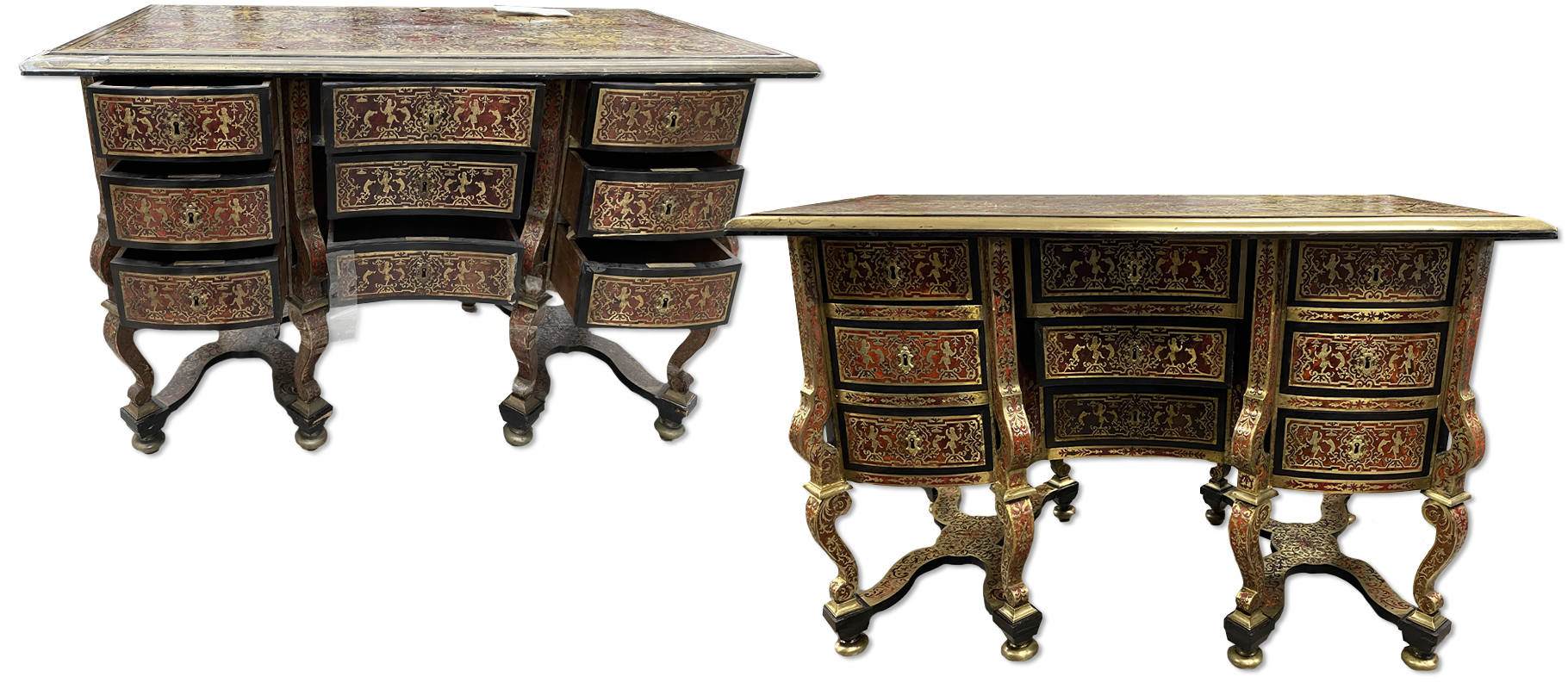
Above is a Boulle desk that was restored by our furniture experts. Below is a boulle style chest that had lost a central decoration. This was recreated and patinated to match the original.
 Above: the central decoration before and after restoration
Above: the central decoration before and after restoration
How can we help?
Our conservation team is happy to offer advice and assist you with any restoration concerns. Email us via [email protected] or call 0207 112 7576

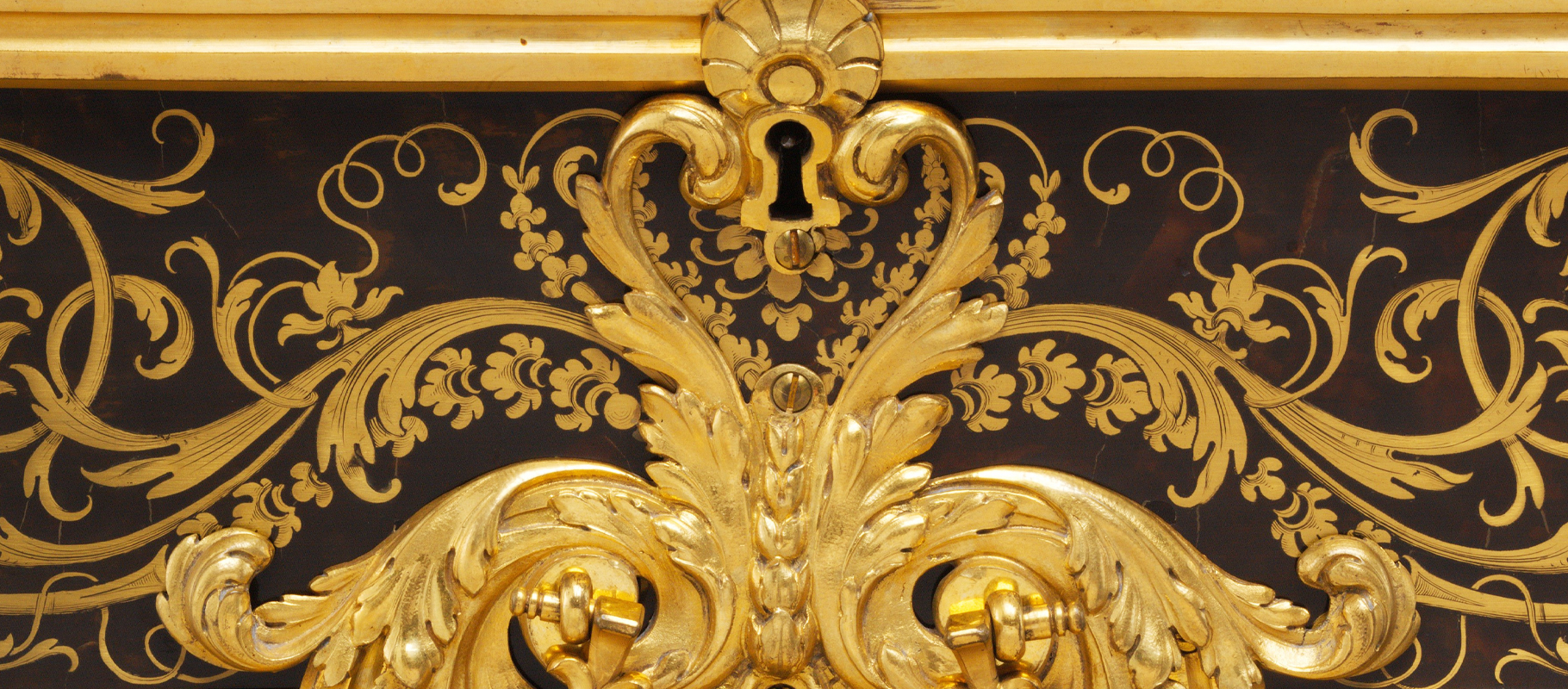 Above: a detail from a boulle chest of drawers, 1710-20
Above: a detail from a boulle chest of drawers, 1710-20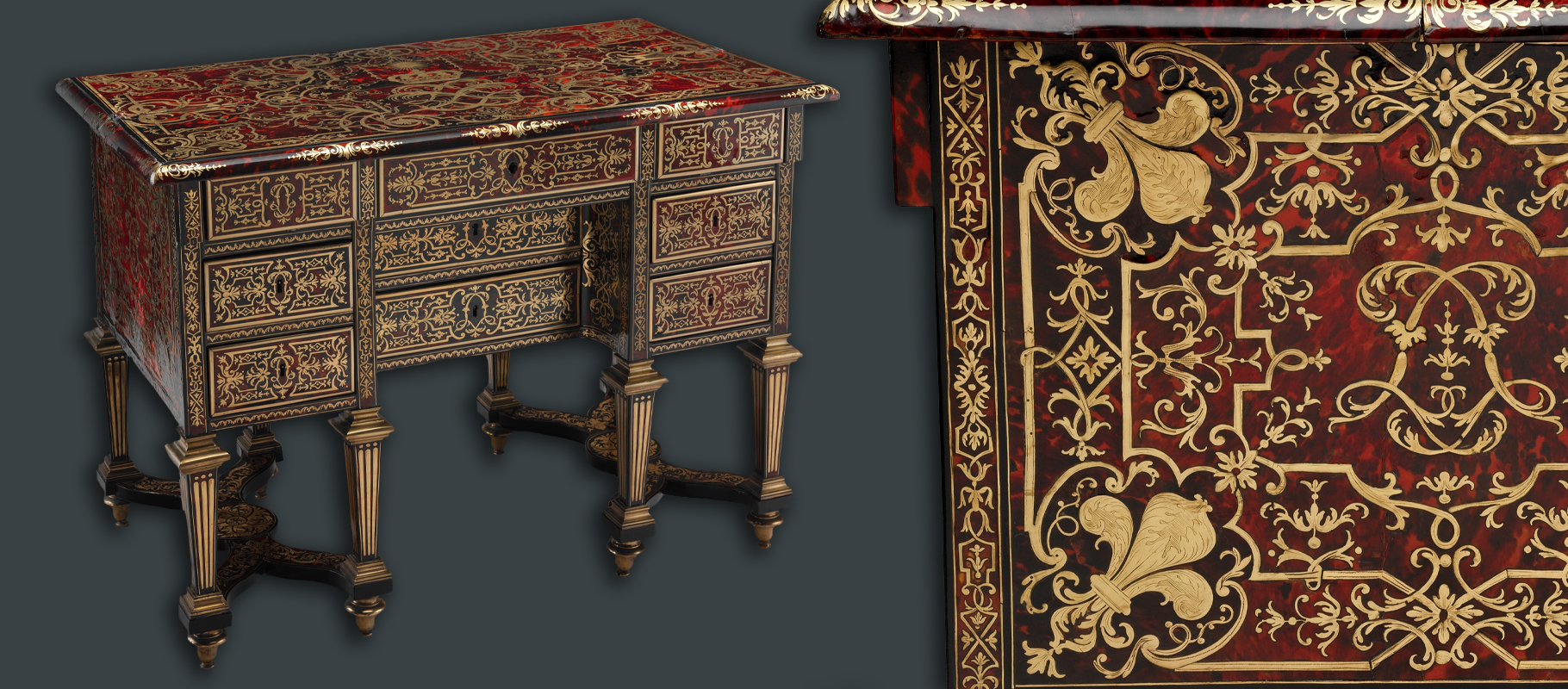 Above: a small boulle work desk, 1685
Above: a small boulle work desk, 1685 Above: a detail of boulle style inlay
Above: a detail of boulle style inlay 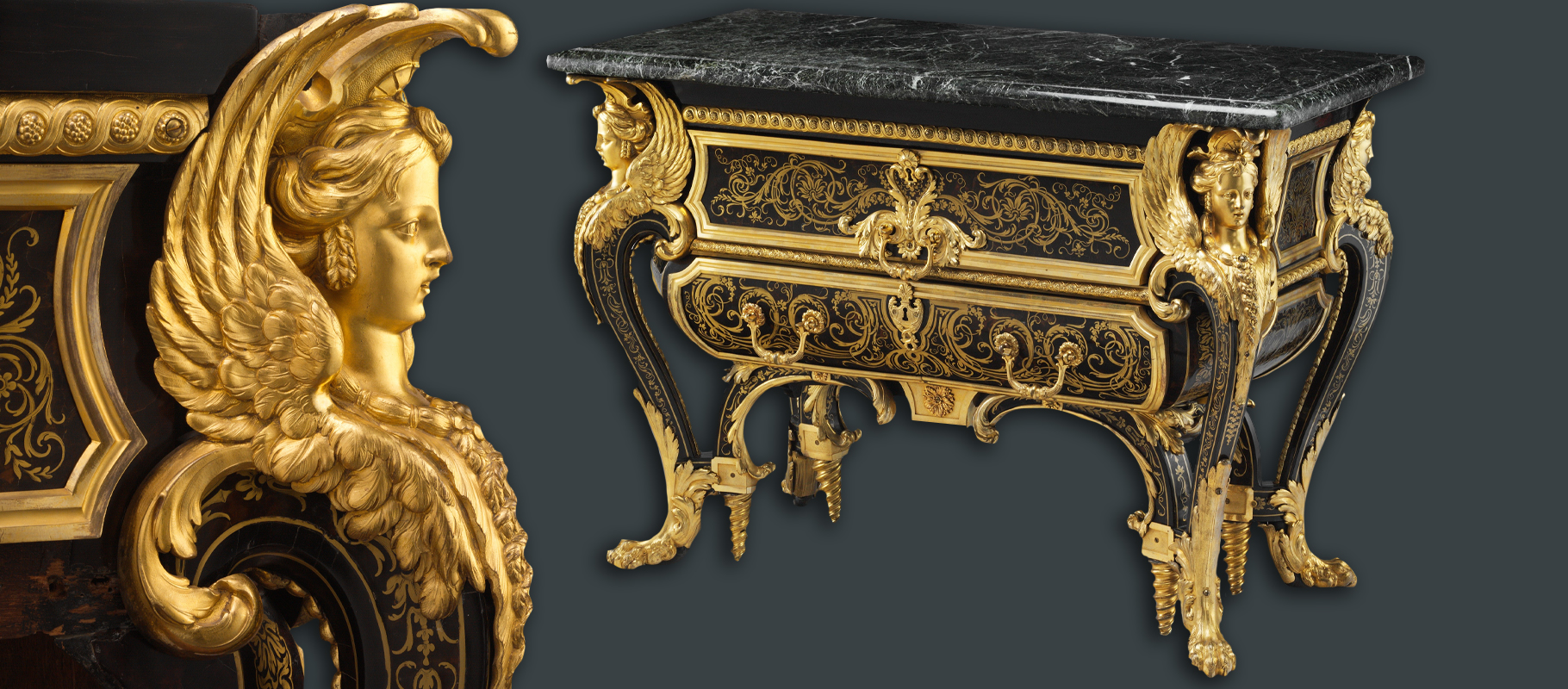 Above: a commode by André Charles Boulle, 1710-20
Above: a commode by André Charles Boulle, 1710-20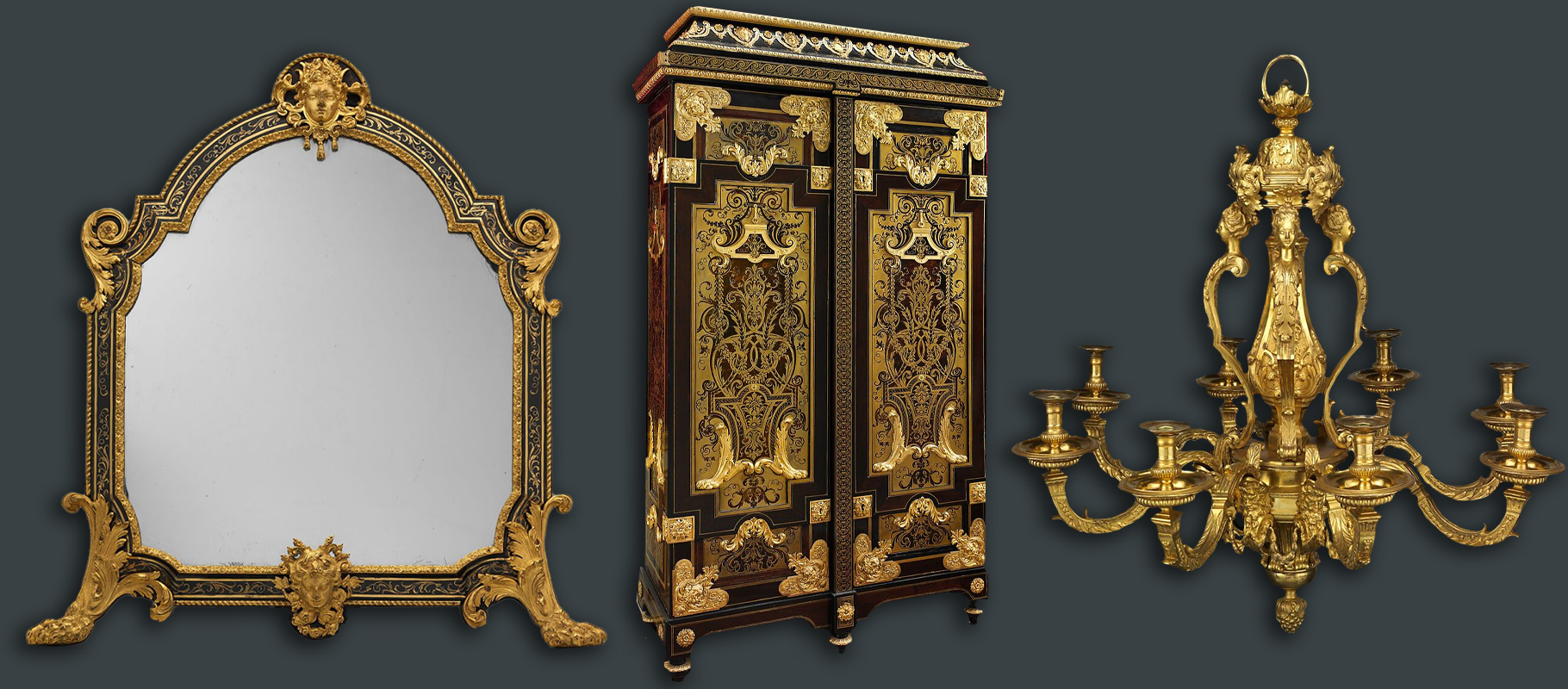 Above: a mirror, cabinet and chandelier attributed to Boulle, 1700-10
Above: a mirror, cabinet and chandelier attributed to Boulle, 1700-10 Above: a boulle style casket with reversed decoration
Above: a boulle style casket with reversed decoration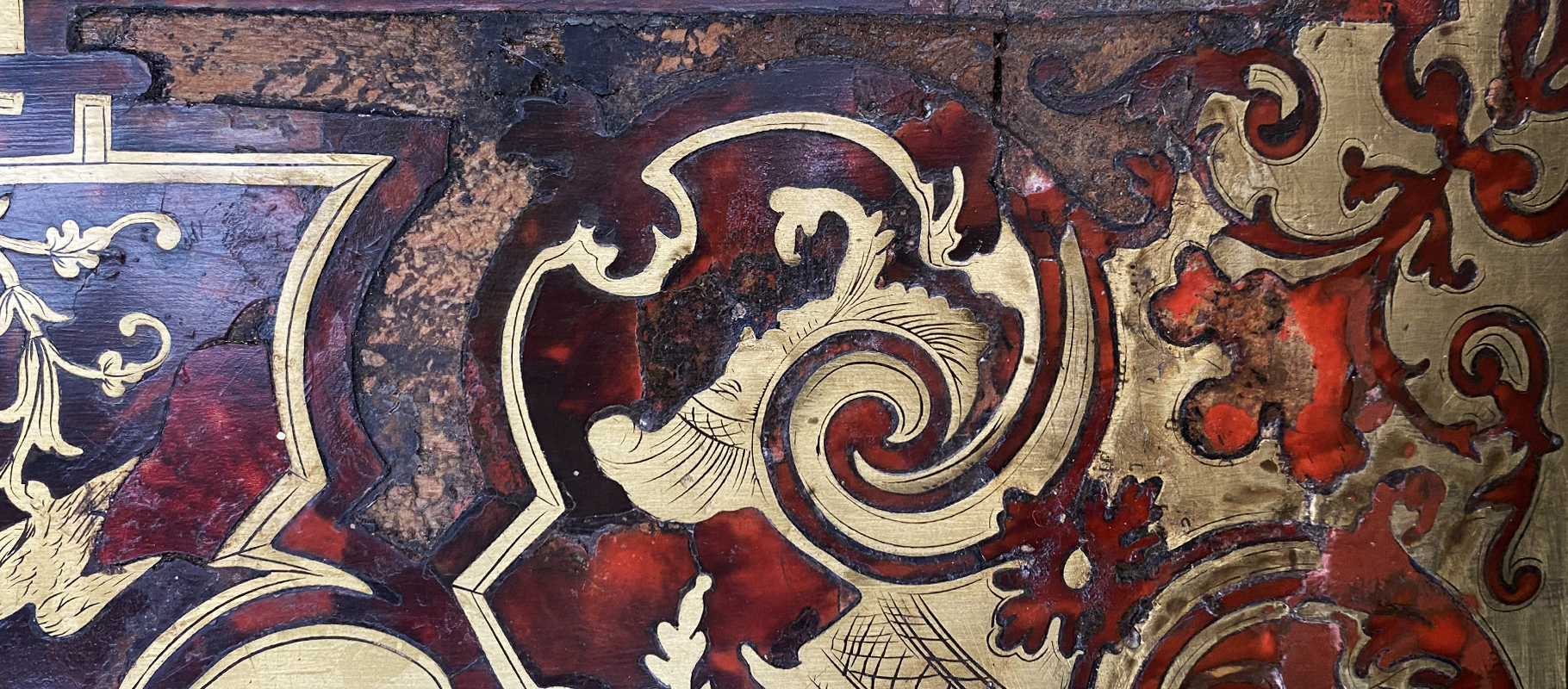 Above: a detail of deteriorating boulle work prior to restoration
Above: a detail of deteriorating boulle work prior to restoration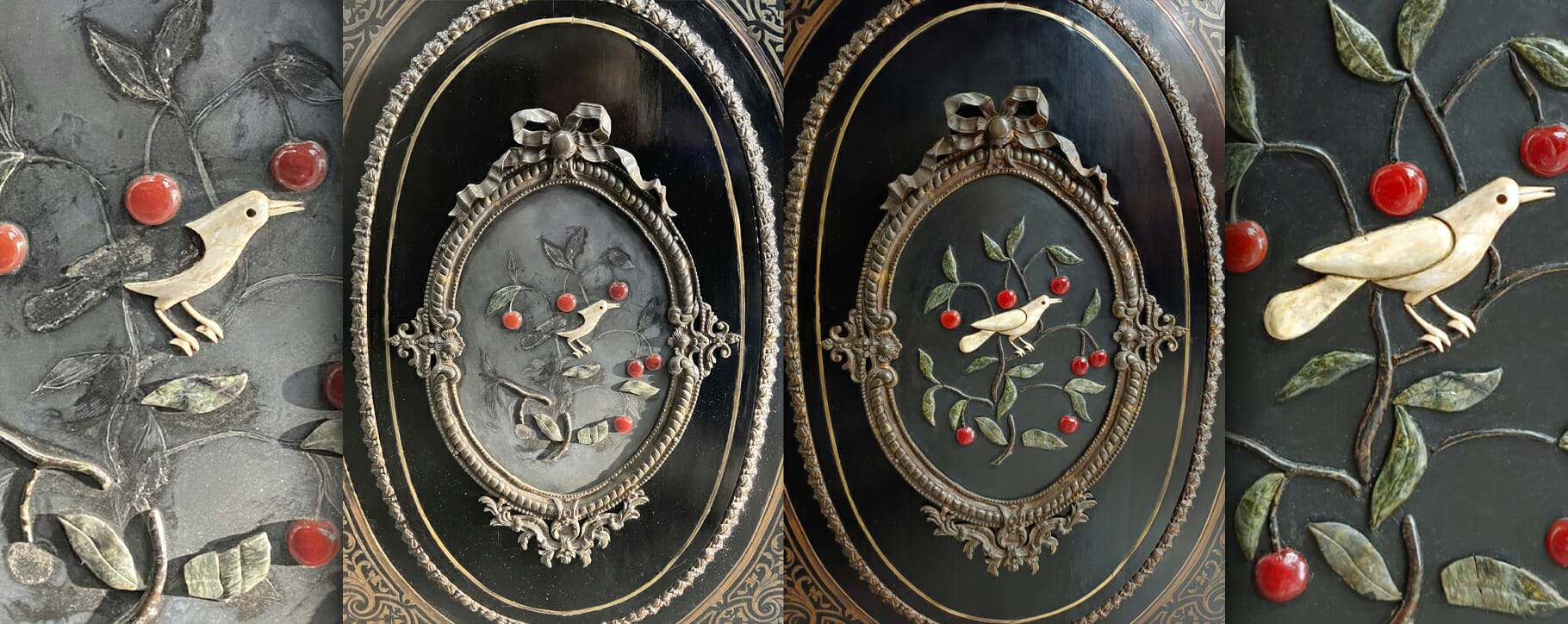 Above: the central decoration before and after restoration
Above: the central decoration before and after restoration




